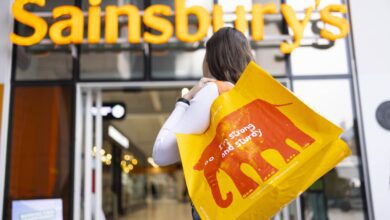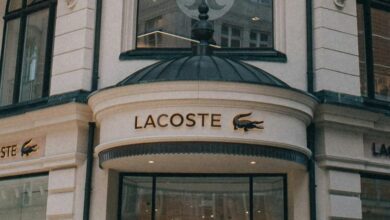The hidden power of retail partnerships
By embracing collaboration as a strategic imperative, retailers in the UK can unlock new avenues for expansion, strengthen their market position, and forge lasting connections with consumers

In the retail landscape, collaboration has emerged as a strategic cornerstone for success. From co-branded product launches to joint marketing campaigns and shared retail spaces, partnerships are not just a trend but a transformative force driving innovation and growth.
In the UK, retailers are harnessing the power of collaboration to unlock new markets, amplify their reach, and pioneer groundbreaking initiatives.
The success of collaborations
Collaborations in retail come in various forms, each with its unique advantages and opportunities. Co-branded product launches stand as a testament to the synergy between two brands, combining their strengths to create offerings that resonate with consumers.
Take, for instance, the collaboration between luxury fashion house Louis Vuitton and streetwear brand Supreme. In 2017 these two opposite brands — one renowned for its high-end leather goods and the other for its streetwear brands — decided to come together and create a collection that generated immense buzz and excitement within the fashion community worldwide.
The Louis Vuitton x Supreme collaboration featured a range of apparel, accessories, and leather goods that combined Louis Vuitton’s luxury craftsmanship and heritage with Supreme’s urban aesthetic and streetwear sensibility. The collection showcased Louis Vuitton monogram prints adorned with Supreme’s signature red and white logo, creating a fusion of high fashion and street culture that captivated fashion enthusiasts around the world.
The collaboration was highly anticipated and received unprecedented attention, with products selling out within minutes of release.
While the Louis Vuitton x Supreme collaboration was not exclusive to the UK, its impact reverberated globally, underscoring the growing convergence between luxury fashion and streetwear culture. The partnership exemplified the potential for collaborations to transcend traditional boundaries, bridge disparate fashion worlds, and create offerings that resonate with diverse consumer bases.
Joint marketing campaigns serve as a potent tool to amplify brand visibility and engagement. By pooling resources and leveraging each other’s audience, retailers can achieve greater impact and resonance in the market.
Shared retail spaces represent another dimension of collaboration, offering retailers a cost-effective means to establish a physical presence in prime locations. The rise of pop-up shops and concept stores has enabled brands to curate immersive experiences for consumers while minimising the risks associated with traditional brick-and-mortar expansion.
One such standout is the collaboration between beauty brand Glossier and UK retailer Nordstrom in 2019. Glossier, a direct-to-consumer beauty brand known for its minimalist aesthetic products, sought to increase its offline presence and reach consumers who prefer to shop in-store rather than online. Nordstrom, a leading fashion retailer in the United States with a reputation for curating high-quality brands, provided an ideal platform for Glossier to achieve its expansion goals.
Through pop-up installations within Nordstrom stores, Glossier successfully introduced its best-selling skincare and makeup products to a broader audience, capitalising on the retail giant’s established customer base.
Driving innovation and expansion
Beyond immediate gains, partnerships serve as catalysts for innovation and expansion, enabling retailers to stay ahead in a fiercely competitive market. By collaborating with complementary brands or industries, retailers can tap into new expertise, technologies, and consumer segments.
A prime example of this is the partnership between supermarket chain Sainsbury’s and Argos, a leading retailer in technology and home products.
Through a strategic acquisition, Sainsbury’s integrated Argos stores within its supermarkets, offering customers a diverse range of products and services under one roof. This symbiotic relationship not only enhanced convenience for shoppers but also facilitated cross-selling opportunities, driving revenue growth for both entities.
Similarly, the collaboration between online giant Amazon and British clothing retailer Next revolutionised the retail landscape with the introduction of click-and-collect services. By leveraging Amazon’s extensive logistics infrastructure and Next’s established network of stores, the partnership streamlined order fulfilment and enhanced the omni-channel shopping experience for consumers.
The role of paid partnerships
Influencers have become integral partners for brands, offering a direct line of communication to consumers and playing a significant role in shaping trends and purchasing decisions. Retailers often collaborate with influencers to amplify their reach, drive engagement, and create buzz around their products or campaigns.
One successful example of a paid partnership involving influencers was the one between fashion retailer Topshop and influencer Kate Moss. Kate Moss, one of the most influential models of her generation, collaborated with the retailer on multiple occasions to launch exclusive clothing collections. These collaborations generated considerable excitement among consumers, with Kate Moss’s endorsement lending credibility and desirability to the Topshop brand.
Another notable partnership is the one between online retailer ASOS and influencer Molly-Mae Hague. Molly-Mae Hague, a popular social media personality and former Love Island contestant, collaborated with ASOS to curate a collection of clothing and accessories. The collaboration capitalised on Molly-Mae’s large and engaged following, with her fans eager to purchase the items she personally selected and endorsed.
These partnerships demonstrate how influencers can add value to retail collaborations by leveraging their credibility, authenticity, and engaged audiences to promote products and engage with consumers. Therefore, by partnering with influencers, retailers can tap into new markets, strengthen their brand identity, and create meaningful connections with their target audience.
Navigating challenges
Retail collaborations and partnerships offer numerous benefits, but they also come with challenges that retailers must navigate carefully.
One of the most critical challenges is ensuring alignment between the partnering brands’ values, objectives, and target audiences. Misalignment can lead to conflicts and undermine the success of the partnership. Retailers must thoroughly evaluate potential partners to ensure their goals and values are compatible.
Intellectual property issues are also a concern. Collaborations often involve the use of trademarks, logos, and designs, raising legal concerns. Retailers must establish clear agreements regarding the ownership and usage rights of intellectual property to avoid disputes and legal complications.
There is also a risk of “brand dilution” or damage if collaborations are executed poorly. Retailers must carefully manage the presentation and execution of collaborative initiatives to ensure they enhance rather than detract from their brand identities.
Finally, determining the success of a retail collaboration can be subjective and challenging. Retailers must establish clear metrics and key performance indicators to measure the impact and effectiveness of the partnership accurately. Successful partnerships depend on mutual trust, transparency, and a shared commitment to delivering value to customers.
As the retail landscape continues to evolve, the role of partnerships in driving growth and innovation will only become more pronounced. By embracing collaboration as a strategic imperative, retailers in the UK can unlock new avenues for expansion, strengthen their market position, and forge lasting connections with consumers.











